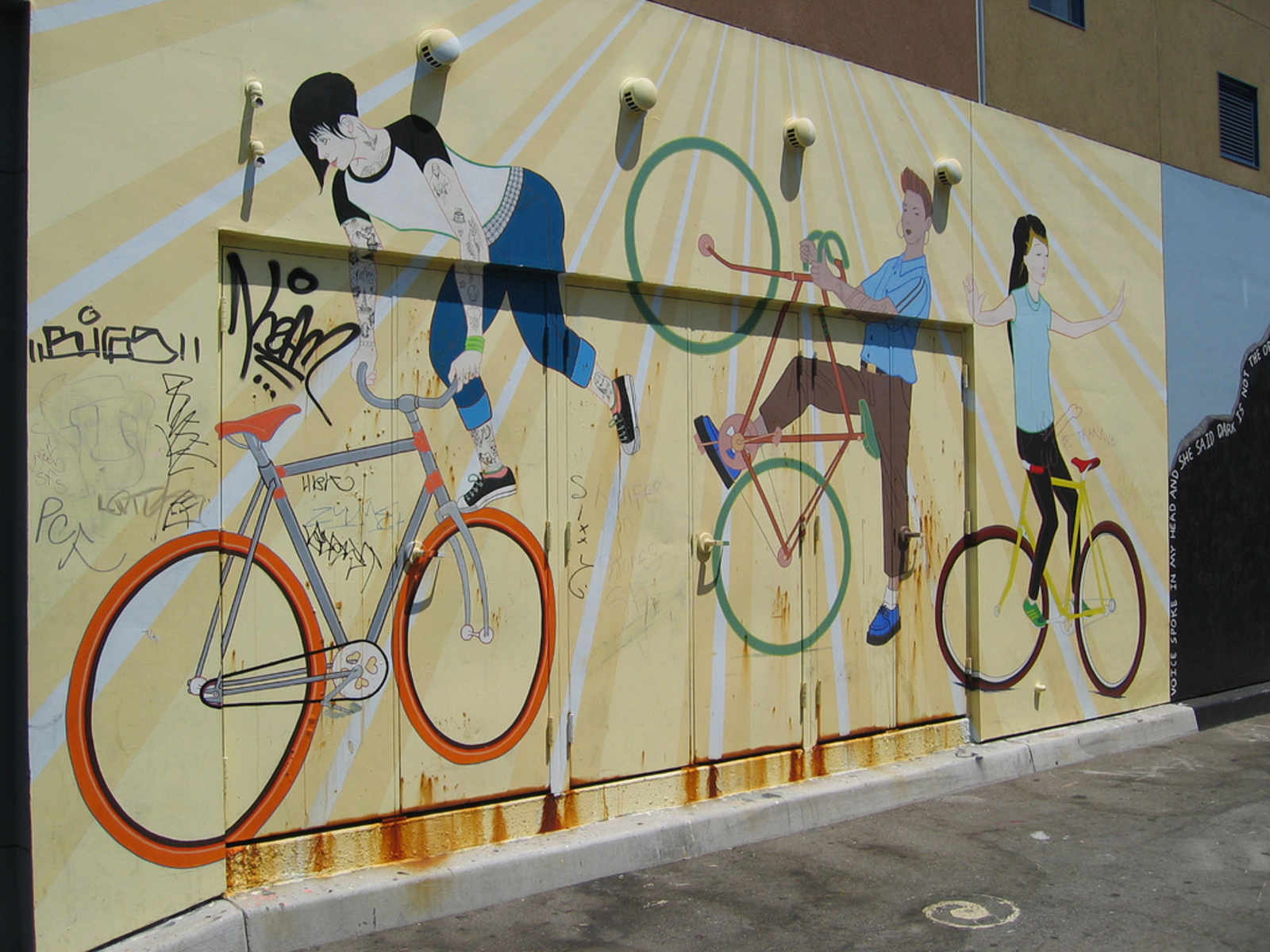— By Kevin Montgomery (@kevinmonty) |

If you've read anything on the subject on urban cycling lately, the answer is a resounding yes. A Chronicle columnist recently suggested (jokingly, of course) pepper spraying “hipster cyclists” (“Oh right, like you've never been driving along all calm and happy, when suddenly a skinny hipster whips in front of you and flips you off with one hand while toking on his American Spirit with the other, even as he chugs his Four Barrel triple latte with his giant beard before pedaling his fixie all the way to the Piercing Emporium to punch holes in your unsuspecting kids.”) SFist brands 'em as a “unusually sensitive group” whom “tend to base their personality on a chosen mode of transportation.” Mission Local frets over cyclists soft pedaling along The Mission's wide sidewalks while 'concerned citizens' at community meetings demand more police crackdowns of reckless environmentalists on their 25-pound Taiwanese death machines. And when a cyclist killed a pedestrian along the Embarcadero over the summer, it made international headlines and spurred the DA into filing criminal charges against the cyclist (despite living in a city in which 800+ pedestrians are hit by cars every year).
Well, Salon recently took up the cause of defending the so-called “transportation bourgeoisie,” looking into the preceived smugness of America's two-wheeled demographic:
Urban bicyclists have an image problem. They’ve become stereotyped as pretentious, aloof jackasses, and a lot of this has to do with the changes taking place in cities right now. During the last decade, dozens of urban cores were inundated by young, well-educated newcomers. Places like Philadelphia, Boston, Chicago and Washington added tens of thousands of these new residents. And one thing’s for sure: These kids really like bikes. An analysis by Atlantic Cities showed that bicycle ridership in these cities soared during this period. In some cases, it more than doubled.
The rise in bicycling compelled cities to make themselves more friendly to bicyclists, and the friendlier they became, the more people starting riding. But as miles of bike lanes were striped and bike-share systems were installed, some of those cities’ residents started to criticize what they saw as major changes being made for a few new arrivals. “It got associated with young people and newcomers, and so people see cycling as something that’s accompanied by gentrification,” says Ben Fried, editor in chief of the online magazine Streetsblog. Bicycles and bike lanes became the most visible, most concrete representation of the demographic shifts transforming cities — and all the tensions and growing pains such a transformation entails.
The bicyclists-as-gentrifiers trope turns out to be more perception than reality, though. Over the last decade, the share of white bicyclists fell in proportion to riders of color. And ridership is remarkably equal across income groups. Part of the reason we don’t see it this way is because all too often, bike infrastructure gets concentrated in tony areas. Look at a map of a city’s bike lanes and bike-share stations and you’ll have a perfect guide to the “good” neighborhoods. In many cities, writes Dave Feucht, editor of the bicycling blog Portlandize, “being able to get around by bicycle is seen as elitist because you have to have money in order to live in a part of the city where it’s even possible to ride a bicycle.”
It's worth mentioning that while the bulk of SF's bike lanes are in the eastern half of the city, SF Bike Coalition's Connecting the City campaign is, in no small part, aimed at providing safe bike routes from the western half of the city to considerably less-foggy downtown area.
But the point rings true: as long as cyclists continue focusing their infrastructure efforts on the Mission's already bike-friendly streets, cranky newspaper columnists will ignore the demographics and paint the bicycle as a vehicle of pretentiousness.
Comments (8)
As a non-cyclist, I’m not against bike lanes, I totally support them. Give cyclists a good and safe place to ride. And I get pissed when I see a car parked in the bike lane, forcing cyclists into traffic. But I get MORE pissed when I see pretty much every cyclist in the city flagrantly ignoring traffic laws.
And I think it’s right to get upset when someone, in any type of vehicle, runs a red light and strikes and kills a pedestrian. And that person SHOULD face charges.
also, critical mass doesn’t engender good will towards cyclists.
killer post @kevmo
Plenty of cyclists are assholes. Plenty of drivers are assholes. Plenty of pedestrians are assholes. The reality is that most of us drive sometimes, bike sometimes, and walk sometimes. I think the best approach is to just try and ignore the attempt to factionalize SF by groups with a certain agenda (i.e. the Critical Mass folks). It’s everyone’s obligation to be courteous to others on the road regardless of your chosen method of transport.
I think the lesson here is you shouldn’t read the Chronicle in the first place.
That Chronicle article is a joke article (funny or not) entitled “21 festive uses for pepper spray”. Cyclists are #8 after congress, banks, and toddlers. Later comes ham, honda civics, etc.
Feels a little oversensitive to call this one out as signifying anything…
-yeahme
A Salon article accused someone else of being a smug, bourgeois elitist? That is hilarious. I guess we should add narcissistic and self-hating to the list.
People are assholes in general.
I’d like to buy a non-gentrified bike.
I think $300 should buy me a good non gentrified bike, but I see a bunch of 800 and $2000 bikes.
Good Article. +1